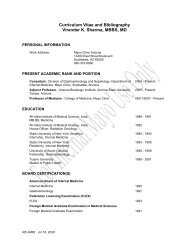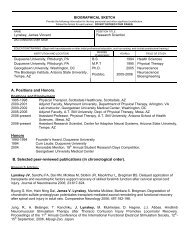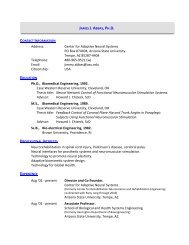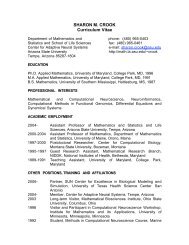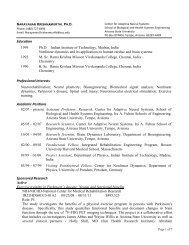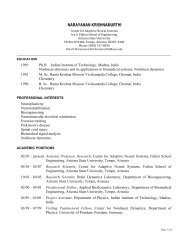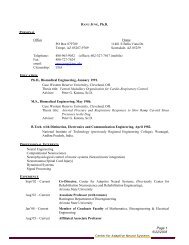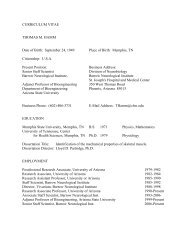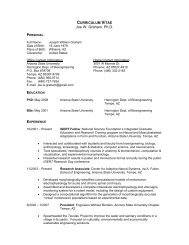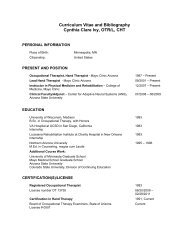ASU FC S 04 - Center for Adaptive Neural Systems - Arizona State ...
ASU FC S 04 - Center for Adaptive Neural Systems - Arizona State ...
ASU FC S 04 - Center for Adaptive Neural Systems - Arizona State ...
You also want an ePaper? Increase the reach of your titles
YUMPU automatically turns print PDFs into web optimized ePapers that Google loves.
Student News<br />
Women Pick Up the Pace<br />
The number of women in <strong>ASU</strong> engineering, computer science and construction<br />
has grown significantly since the early 1990s. In fact, undergraduate enrollment<br />
of women in the Fulton School has increased 77 percent from 1991 to 2003,<br />
three times the national average of 24 percent <strong>for</strong> the same time period.<br />
But even with such dramatic growth, only<br />
about one in five students in the school is<br />
female. Nineteen percent of undergraduates<br />
are women; the number is slightly higher—at<br />
21 percent—<strong>for</strong> graduate students.<br />
The averages mask underlying differences<br />
UNDERGRADUATE<br />
Bioengineering<br />
Chemical & Materials<br />
Civil & Environmental<br />
Computer Science<br />
Construction<br />
Electrical<br />
Industrial<br />
Mechanical & Aerospace<br />
by department, however. A closer look at the<br />
data shows that women comprise almost half<br />
of all students in bioengineering (see the<br />
table on this page). One third of all chemical<br />
and materials undergraduates are women, as<br />
are one third of all graduate students in civil<br />
238 210 448<br />
197 103 300<br />
326 101 427<br />
1117 178 1295<br />
373 40 413<br />
597 95 692<br />
122 72 194<br />
826 1<strong>04</strong> 930<br />
0 300 600 900 1200 1500<br />
and environmental engineering. And 37 percent<br />
of the undergraduate students in industrial<br />
engineering are women.<br />
Smaller numbers of women have chosen<br />
computer science and engineering, electrical<br />
engineering, construction, and mechanical<br />
and aerospace engineering as majors. Three<br />
of these four are also the largest departments<br />
in the school, which impacts the<br />
overall average.<br />
Diversity among the student and faculty<br />
populations is an important objective <strong>for</strong><br />
almost all institutions of higher learning. It<br />
ensures a rich cultural and intellectual environment<br />
that facilitates growth and innovation.<br />
As we continue to build our programs<br />
<strong>for</strong> recruiting and retention of underrepresented<br />
groups, we must understand the<br />
dynamics that attract individuals to an area<br />
of learning and motivate them to pursue it<br />
as a profession. In this issue of Full Circle,<br />
we are highlighting several successful<br />
women in engineering, computer science<br />
and construction in order to gain insight<br />
into what has led to their success.<br />
GRADUATE<br />
Bioengineering<br />
Chemical & Materials<br />
Civil & Environmental<br />
Computer Science<br />
Construction<br />
Electrical<br />
Industrial<br />
Mechanical & Aerospace<br />
50 40 90<br />
75 21 96<br />
66 33 99<br />
301 91 392<br />
43 9 52<br />
500 103 603<br />
138 33 171<br />
100 9 109<br />
0 100 200 300 400 500 600<br />
WOMEN<br />
MEN<br />
16 IRA A. FULTON SCHOOL OF ENGINEERING – SPRING 20<strong>04</strong>



